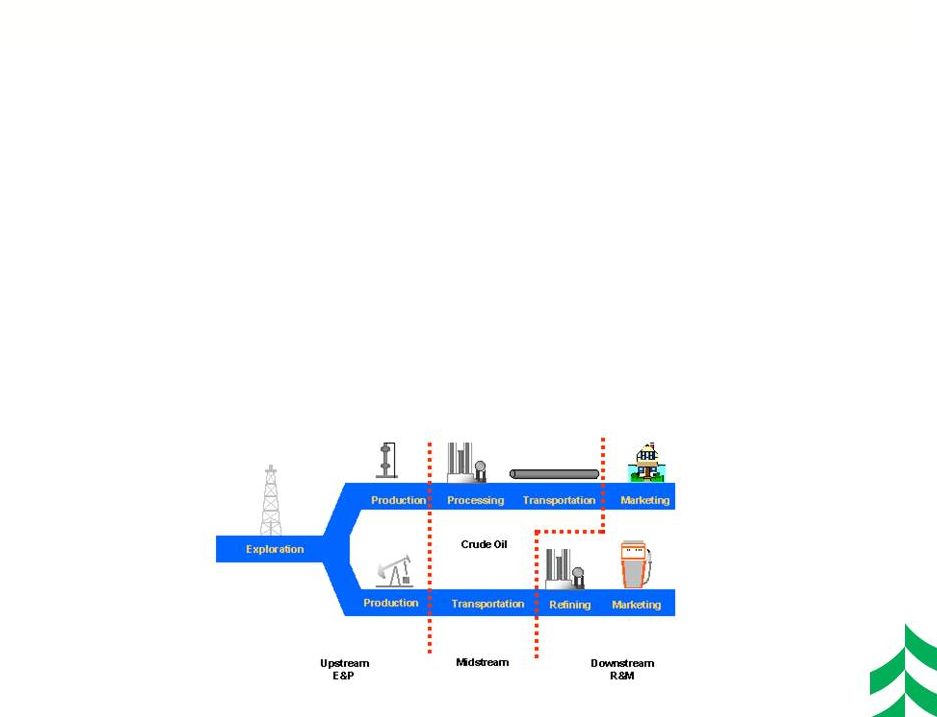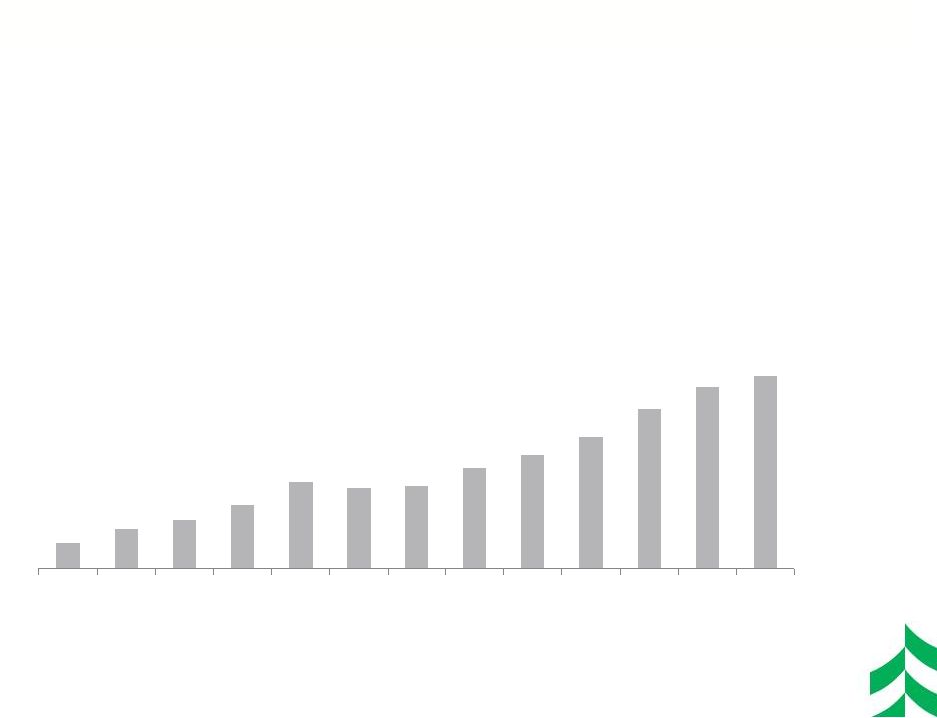Attached files
| file | filename |
|---|---|
| 8-K - FORM 8-K - ASSOCIATED BANC-CORP | d838341d8k.htm |
 OIL
AND GAS LENDING FOURTH QUARTER 2014
ASSOCIATED BANC-CORP
INVESTOR
PRESENTATION
Exhibit 99.1 |
 FORWARD-LOOKING STATEMENTS
Important
note
regarding
forward-looking
statements:
1
Statements made in this presentation which are not purely historical are
forward-looking statements, as defined in the Private Securities
Litigation Reform Act of 1995. This includes any statements regarding
management’s plans, objectives, or goals for future operations,
products
or
services,
and
forecasts
of
its
revenues,
earnings,
or
other
measures
of
performance.
Such forward-looking statements may be identified by the use of words such
as “believe”, “expect”, “anticipate”,
“plan”, “estimate”, “should”, “will”, “intend”, “outlook”, or
similar expressions.
Forward-looking statements are based on current management
expectations and, by their nature, are subject to risks and uncertainties. Actual
results may differ materially from those contained in the
forward-looking statements. Factors which may
cause actual results to differ materially from those contained in such
forward-looking statements include those identified in the
Company’s most recent Form 10-K and subsequent SEC filings.
Such factors are incorporated herein by reference. |
 OIL
& GAS VALUE CHAIN •
From beneath the earth’s surface to the end-user:
–
Field Services Sector (Associated Bank is not active in this sector)
•
Supports drilling for oil and gas (offshore and onshore)
–
Upstream Sector (This is Associated Bank’s Oil & Gas
segment’s focus) •
Involved in drilling for oil and natural gas and operating the wells that bring
the oil and natural gas to the surface. Also referred to as the
‘Exploration and production or E&P sector’. –
Midstream Sector (Associated Bank is not active in this sector)
•
Processes, stores, markets, and transports crude oil, natural gas and the various
natural gas liquids like ethane, butane and propane.
–
Downstream Sector (Associated Bank is not active in this sector)
•
Oil refineries and petrochemical plants, and petroleum product distribution via
affiliated retail outlets and natural gas distribution companies.
Responsible for marketing refined products such as gasoline, diesel, and
jet fuel. 2 |
 •
United States Oil and Gas production is in a renaissance
–
Continued enhancements in production techniques like horizontal drilling and
hydraulic fracturing have reversed a declining trend in oil and gas
production –
U.S. crude oil production increased from an average of 7.5 million barrels per day
in 2013 to 8.6 million barrels per day in 2014 and is forecast to be 9.4
million barrels per day in 2015 •
This would be the highest daily production since U.S. crude oil production peaked
at 9.6 million barrels per day in 1970 (declined to a low of 5 million
barrels per day in 2008) •
Share of total U.S. liquid fuels consumption met by net imports fell from 60% in
2005 to an average of 33% in 2013 and is expected to decline to 21% in
2015, which would be the lowest level since 1969
•
Benefits to the United States
–
Energy security
–
Thousands of American jobs
–
Millions of dollars in tax revenues
(Source: U.S. Energy Information Administration)
3
CURRENT STATE OF UPSTREAM SECTOR |
 PLAYERS IN THE UPSTREAM SECTOR
•
Integrated oil and gas companies
–
Derive revenue from all phases of the energy value chain (e.g., ExxonMobil, BP,
Shell) •
Independent oil and gas companies (Associated Bank’s Oil &
Gas segment’s focus) –
Receive
substantially
all
revenue
from
the
production
of
oil
and
natural
gas.
They
are
public
and
private
companies
that
range
in
size
from
very
small
to
very
large
–
More than 6,000 independent oil & gas producers in the U.S.
–
Responsible for:
•
54% of domestic oil production
•
90% of domestic natural gas production
•
Drilling approximately 95% of wells in the U.S.
–
Direct and indirect impact of oil and natural gas industry to the U.S.
economy: •
$1.2 trillion contribution to U.S. GDP in 2011(8% of U.S. total)
•
9.8 million jobs in 2011 (5.6% of U.S. total)
•
>$30 billion in federal, state, and local taxes
4
(Sources: Independent Producers Association of America, American Petroleum Institute, and
PWC’s July 2013 article “Economic Impacts of the Oil and Natural Gas Industry on the U.S.
Economy in 2011)
|
 RESERVE-BASED LENDING
•
Reserve-based lending is a form of Asset-based lending business
•
This is a standard lending model for borrowers engaged in the Upstream sector of
the oil and gas industry
•
Associated Bank’s emphasis is on the small to mid-size independent
segment, both public and private,
collateralized
by
oil
and
gas
reserves
(larger
companies
typically
borrow
on
an
unsecured basis)
•
Typical Borrowing Base Valuation:
–
Based on independent review by Associated Bank petroleum engineers of proven
reserves –
Overall market assessment of commodity prices is made based on industry information
sources and is continuously monitored to estimate future cash flow from
proven reserves –
Cash
flows
from
proven
reserves
are
discounted
to
derive
a
present
value
–
Risk adjustments are made to present value of non producing proven reserves
–
A further significant advance rate haircut is applied to derive a conforming
borrowing base –
Semi-annual
redetermination
of
borrowing
base
and
more
frequent
field
visits
during
periods
of high volatility or risk in O&G markets.
–
If the borrowing base declines below the outstanding balance, there are
restructuring expectations.
Typically, this would mean reducing revolving lines to fully amortize inside a
conforming borrowing base within 3-6 months.
5 |
 TYPICAL LOAN STRUCTURE
•
Secured by first priority lien on oil and gas reserves
•
These are syndicated deals with several banks participating in the credit
•
3 to 5 year working capital revolver with availability governed by a borrowing base
subject to semi-annual determinations
•
Proceeds used for acquisitions, development, working capital / letter of credit
issuance, and general corporate purposes
•
Financial covenants typically include cash flow leverage, interest coverage, and/or
current ratio measured quarterly
•
Sources of Repayment:
Primary Source of Repayment (“PSOR”) is cash flow.
Secondary Source of Repayment (“SSOR”) is sale of assets.
6 |
 ASSOCIATED’S OIL & GAS PORTFOLIO
•
Established in January 2011 as a de novo lending vertical with zero loans
outstanding and zero clients, the Oil & Gas group has grown steadily to
its current book of approximately forty-seven clients with aggregate
commitments of more than $1 billion ($652MM funded; ~63% utilization).
–
Associated
has
Oil
and
Gas
average
loan
balances
of
$652
million
as
of
9/30/2014
representing approximately 3.8% of the total average loans outstanding ($17.1
Billion). –
In addition, these balances are diversified between Oil and Gas operations.
7
Oil and Gas Average Loan Balances by Quarter ($ in Millions)
$87
$165
$295
$281
$387
$539
$652
Q3
2011
Q4
2011
Q1
2012
Q2
2012
Q3
2012
Q4
2012
Q1
2013
Q2
2013
Q3
2013
Q4
2013
Q1
2014
Q2
2014
Q3
2014 |
 RISKS
•
Commodity price risk. Partially mitigated by:
–
Borrowers usually mitigate prices risk by entering into multi-year commodity
hedges with financial counterparties
–
Risk adjustments are made to proven reserves that are not producing
–
Commodity
price
environment
is
continuously
monitored
and
changes
in
commodity
prices
are
considered
in
semi-annual
redeterminations
•
Development risk. Partially mitigated by:
–
Borrowing Base is derived from existing Proven reserves (90% certainty of
recovery) –
Risk adjustments are made to non-proven, developed and producing reserves
–
At
least
70%
of
borrowing
base
is
required
to
be
attributable
to
proven,
developed
and producing reserves
•
Reserve risk. Partially mitigated by:
–
Reserve report is required to be prepared by a qualified independent third party
engineering firm –
Associated Bank employs highly qualified staff petroleum engineers to evaluate the
assumptions utilized by the independent third party firms that prepare the
reserve reports. The engineering report addresses four critical
concerns: 1.
Pricing –
Future O&G prices must be realistic and fully supported
2.
Costs –
Exploration, development, and production costs
3.
Discount Rate –
Include the assumptions made
4.
Timing
–
Engineering
report
should
be
no
more
than
six
months
old,
never
over
a
year.
8 |
